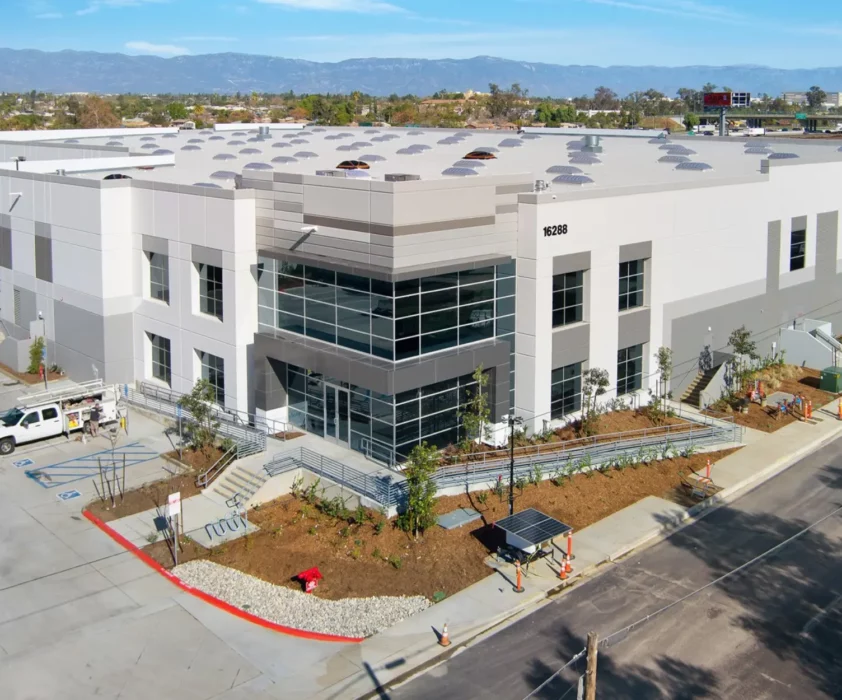
As the business climate continues to shift and evolve, the industrial market is experiencing its own evolution as it tries to gain a foothold in an uncertain economy. With supply chain issues no longer looming and fewer ships lingering at the ports—a positive sign for the manufacturing/distribution sector—we’re still seeing strong demand for quality industrial product. Warehouse and distribution facilities undoubtedly reaped the benefits of the substantial shift to e-commerce throughout the pandemic, but the big question on everyone’s mind now is: when will oversupplied markets find their new normal after struggling with their own bout of “long Covid”?
Who’s in the driver’s seat?
Currently, SoCal’s Inland Empire (comprised of over 680M SF of industrial product) is seeing fewer deals occurring in the 50,000 to 200,000 SF size range due to an abundance of supply. Owners of big-box buildings (500,000+ SF) may find themselves a bit more insulated, but still have a supply issue, especially in the sublease space. Rental rates haven’t dropped off a cliff yet, holding steady at $1.43 PSF as of Q1 2023. But with the ongoing oversupply of industrial facilities not slowing down, rates will most likely decrease in the foreseeable future. On the other hand, private owners are more likely to offer concessions such as free rent and lower lease rates, allowing these buildings to move faster than institutionally owned facilities.
With the western half of the Inland Empire filled to near capacity and a scarcity of development sites for large warehouses, the eastern submarket, in particular, seems to have heated up, currently leading the overall Inland Empire market in net absorption due to sizeable tenant move-ins. Recent significant lease signings include Brother International’s 348,375 SF transaction at Harley Knox Gateway in Perris and Cypress Medical Products’ 333,572 SF at Harvill Logistics Center, also in Perris.
As we know from past experience, the potential to seize opportunities is often overlooked when challenges arise. But with the abundance of vacant product on the market in the Inland Empire—and many that are Class A buildings geared toward distribution/warehouse use—there is the possibility for adaptive re-use/repurposing, especially for those facilities that might be considered more antiquated. Outdoor storage yards are performing relatively well—and are in an even better position if situated on a property with excess land.
Location…location…and regulation
Location is everything…but so is savings. Companies still want to be as far west as possible (Ontario, for one), but we’re even seeing tenants going up to the High Desert, with the first few spec leases having just signed there, such as Iron Mountain’s 400,000 SF building and Amazon’s 1.5M SF building both in Victorville, for example. From a developer’s standpoint, it’s also easier to secure entitlements and approvals in the markets further west, and from a user perspective, venturing into submarkets like Apple Valley to avoid higher rental rates is becoming more the norm. Our team at Stream recently closed on 200 acres with a developer in the High Desert, and Fellowship Logistics just leased a 1M SF building from Exeter in Hesperia.
In terms of development, there’s not much opportunity in the 30, 40, and 50-acre range, so it’s limited when it comes to what’s possible to build. A few sites are still left in the eastern part of the submarket (Perris, for example), but we’re finding site selection to be more challenging in the west. The oversupply is also causing developers to press pause on construction (even if the land is entitled).
Another trend we’re continuing to see is more companies migrating to Mexico due to less stringent regulations. According to a recent NAIOP article, Mexico, in particular, has experienced significant industrial development growth in recent years, boasting 13 free trade agreements with privileged access to 50 countries, representing 60% of global GDP and more than 1.3 billion potential consumers. The most significant of these agreements is the United States-Mexico-Canada Agreement (USMCA), which replaced NAFTA and was implemented on July 1, 2020.
So, what’s the verdict?
The industrial sector is performing better than many assumed it would as we reach the halfway mark of 2023. Perhaps some of the negative forecasting can be attributed to those who spoke too soon back in early 2022 when many seemed to be suffering from amnesia when it came down to the oversupply conversation. We easily forget what happened at the start of the recession in ’08, when absorption rates were at historic levels, and then when Covid came into play, it also distorted everything. Tenants were pre-leasing during Covid, and some companies weren’t even responding to offers early on in construction. Now, businesses are leasing anything they can. Absorption rates are moving closer to availabilities, and absorption is getting back to more historic levels.
In reality, the market is moving back to where we really should be, to pre-Covid levels. We were up 200% pre-Covid, and now we’re down 30-50%, but pricing’s still above pre-Covid. So, the truth is, we’re far from spiraling: people are still buying buildings and closing deals.
Stefan Pastor and Brad Yates are both Senior Vice Presidents in Stream’s Southern California market, responsible for building the firm’s industrial brokerage platform in the Inland Empire region. With a combined 30+ years of experience in commercial real estate, they’re focused on sourcing and executing new acquisition opportunities, investment sales, leasing, and developments, along with recruiting and training team members.

